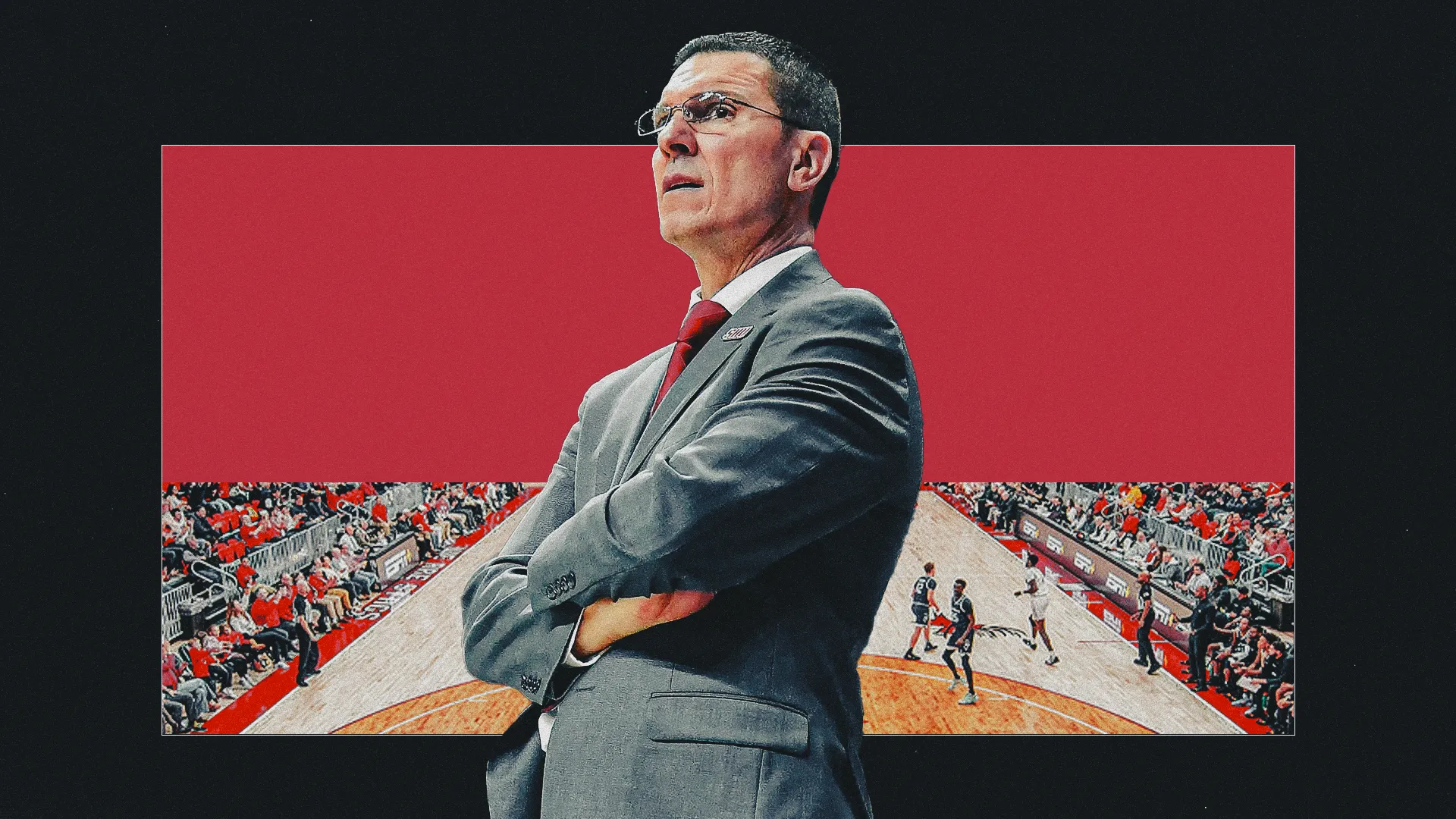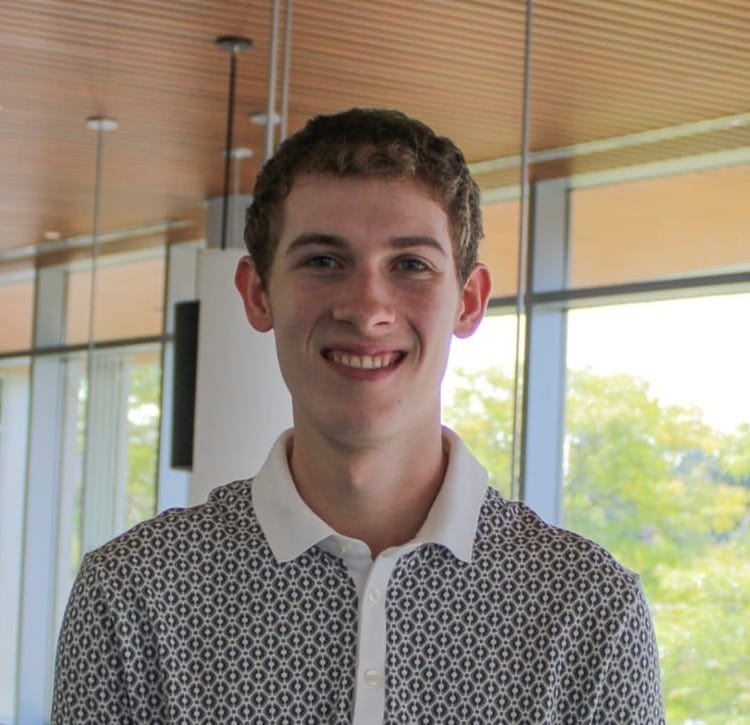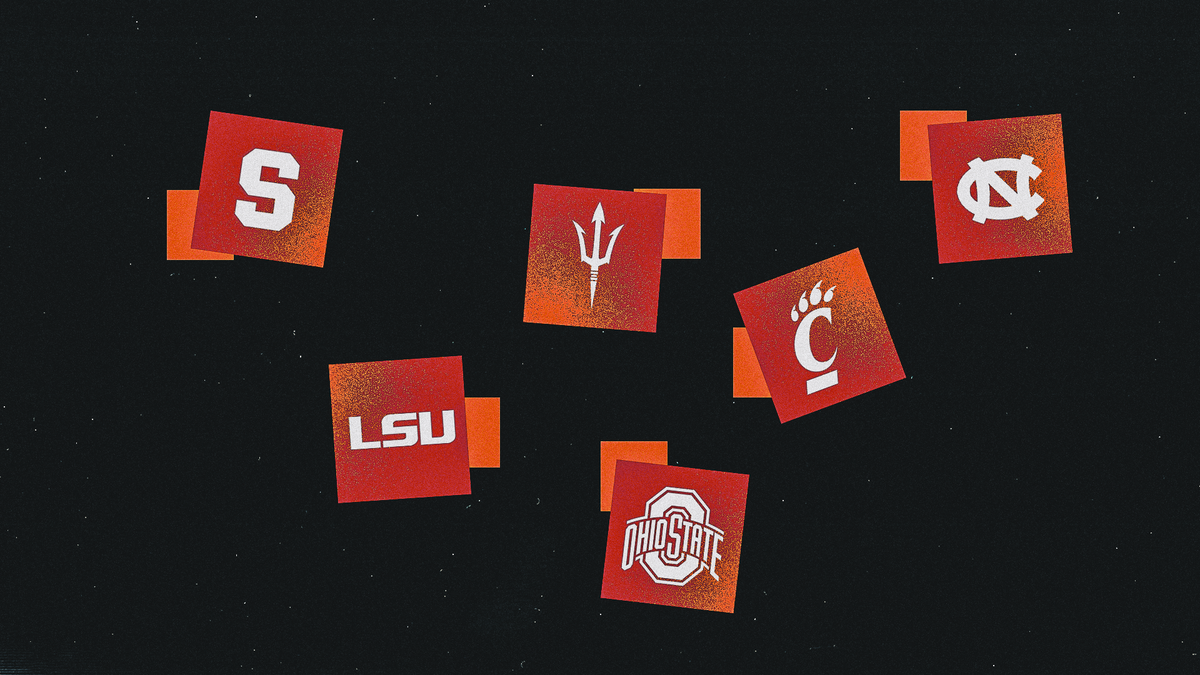The turbulent ride that is the college basketball transfer portal kicked into gear at the wrong time for Anthony Latina this past March.
The 51-year-old Sacred Heart head coach was headed to Evansville, Indiana, to watch his son Luke’s Assumption team play in the Division II Elite Eight. While excitement built within the Latina family for the Greyhounds to take the floor, Anthony’s Pioneers program had its own news for him to contend with.
After averaging 8.1 points and 6.6 assists for the Pioneers during his freshman season, Metro Atlantic Athletic Conference All-Rookie guard Mekhi Conner announced that he would be entering the transfer portal. The hometown player, the guard primed to blossom into a star in his sophomore season, the guy that the Sacred Heart staff poured time and energy into bringing on campus, gone in under 365 days.
These stories have become all too common at the mid- and low-major levels of college basketball. In the MAAC – the Pioneers’ current conference – Conner had joined Iona’s Adam Njie and Merrimack’s Adam “Budd” Clark, among others, as players looking for new opportunities after making their mark in the New York metro-based conference.
Although the trip to Evansville was supposed to represent a break for Latina, the whirlwind nature of team-building in the NIL era stops for no one. The family trip would have to be a work trip as well.
—
Latina is not a new-age college basketball hire. He’s been the head coach at Sacred Heart (located in Fairfield, CT, enrollment just over 11,000) since 2013, when the school was a Northeast Conference program. He joined as an assistant in 2005. The world of coaching he entered into then has changed dramatically.
“It’s adapt or die,” Latina told Basket Under Review. “That’s the bottom line … This has been a very unforgiving business for a long time. It just got a lot more unforgiving in the last three or four years.”
“There’s a little more pressure on every [recruiting] class to be good and to fill your needs and so … there’s a lot less downtime [in coaching] than there’s ever been, which is tricky, but no one’s feeling bad for us, believe me.”
Case in point: Evansville. Latina was making phone calls throughout his and his wife’s drive to the city. Instead of reminiscing on memories of their now-redshirt junior son and his basketball journey, Latina’s wife Jodi was listening live to her husband working through a situation with a player expected to be one of the team’s cornerstones.
In short order, the calls worked. Latina said that the New Haven native had wanted to stay at the school and that there was a “miscommunication” between head coach and player that led to him entering the portal. The issue was cleared up, and exactly 27 hours after it was reported that Conner was in the portal, the freshman withdrew.
Conner’s news meant that the Pioneers now have four 20+ minute players returning to their program for 2025-26, a distinction that only two other MAAC schools (Manhattan and Siena) share. Joining the now-sophomore will be All-MAAC Third Team member Anquan Hill (12.8 points), sophomore guard Nyle Ralph-Beyer (9.5 points) and former Hofstra transfer Griffin Barrouk (7.1 points). It’s an impressive core for a school of Sacred Heart’s stature to retain.
The process of getting all four back wasn’t a quick one, according to Latina. Throughout the regular season, the staff was having discussions with all four players, conveying their vision for each one’s development and gauging where their guys stood in their offseason plans. It may have been tedious at times, but it was absolutely necessary.
“If you’re not communicating with your players about what your intentions are, somebody else is,” Latina said. “I don’t think you wait that much anymore … you’re talking about this pretty early in the season.”
Sure, there’s always the threat that other factors (usually big money) can take precedence over those months of one-on-one chats. The staff had similar conversations with leading scorer Tanner Thomas, who transferred to Loyola Marymount. Amiri Stewart was another double-digit scorer who left for Campbell. But at the end of the day, there are typically many factors that influence players’ decisions, and in the earlier four cases, the strongest bond won out.
Even after the core announced its return for the 2025-26 season, it was still pedal to the metal for Latina and company. These days, maintaining good relationships with your players in the spring is just as important as building up those relationships in the first place.
“In the old days, if you had a good year, May was a time where you kind of sat back and enjoyed it and relaxed a little bit,” Latina said. “[Now] it’s like crunch time in the season mode, you know. It’s almost as important because if you have a bad month, like it could sink your program for the next year or two.”
“You can have the best relationship with any of these players [but] sometimes things go off the rails. And it’s not anyone’s fault, it’s just the uncertainty of the world we’re living in in college basketball.”
The precarious situation leaves one date circled on Latina’s, and likely many other coaches’, calendars.
“The day the [transfer] portal closes is a great day for college coaches.”
—
Before the portal closed on April 22, Latina and his staff brought in two transfers. Dashon Gittens was a three-year starting guard at Florida International, averaging just over eight points and three rebounds over 85 career games. Yann Farell also arrived from East Carolina after averaging 5.1 points, but the now-senior wing did his best work as a two-year starter at St. Bonaventure.
Their paths to getting noticed by Sacred Heart couldn’t have been more different.
The Pioneers were forced to hear about Gittens from the moment he stepped foot in Miami via his brother Donte, who is going into his fourth year working on staff with the program. Once they heard that the younger sibling was interested in playing closer to his hometown of Hartford, and that he might want to be involved with a little more winning (FIU went 35-63 over his three seasons there), they pounced.
“As soon as that need arose [with 6-foot-3 Stewart and Aidan Carpenter leaving, Gittens] was the first person we thought of,” Latina said.
The senior should bring defensive instincts and playmaking to Sacred Heart’s roster after doing the same with the Panthers.
Farell committed to the Pioneers just two days after Gittens, but his journey to the program took shape much later on. Latina admitted that the wing wasn’t a top priority for the staff when the portal first opened. With Thomas – an All-MAAC Second Teamer – gone, there were other players the team “really [was] excited about” to fill in his shoes. But, as with most teams, Sacred Heart’s first few swings in the portal were whiffs.
That meant back to the drawing board, where assistant coach Tom Barrett’s formula awaited. Barrett joined the Pioneers two years ago after serving as the Director of External Operations under Steve Pikiell at Rutgers. He handles all of Sacred Heart’s analytics, doing a job that’s much more important than it was when Latina first arrived in Fairfield.
Latina praised Barrett’s formula as having worked for the program. Across the nation, and even across the MAAC, other coaches do the same with their analytics guys. The Pioneers don’t have the money to pay for a gigantic portal recruiting service like most high majors can, but they can do well in keeping up with Barrett, a coach who knows his way around the analytical side of the sport. According to Latina, his assistant’s work is enough to where Sacred Heart “probably [does] a little more than most [with analytics].”
Now, while the Pioneers staff will certainly get more aggressive in recruiting players who generate as targets for them, they won’t just blindly offer them scholarships.
The eye test is still valuable to Latina. Figuring out if a player will fit in his team’s systems is something to look at. Reaching out to others on a player’s character is also important. In Farell’s case, the Gabon native received rave reviews after staff members talked to people who knew the wing well. All of a sudden, Sacred Heart’s opinion had changed on Farell, and he went from an afterthought to a guy the staff was all in on.
Staffs do need to toe the line when it comes to how much time they spend debating on whether to go after a player. Things can change on a dime in portal recruiting, and in order to give themselves the best odds of securing a commitment before another team swoops in, teams need to show love early and often.
In Farell’s case, the Pioneers felt they did a good job on both sides, getting their homework done early before aggressively pursuing the then-East Carolina player.
“[Farell] wanted to go somewhere where he was going to have a bigger role,” Latina said. “And we lost an all-conference player at his position in Tanner Thomas and [Farell] is a very similar player … and so I think it was a combination of the right fit[s].”
“We think we got a much better player than the guys we missed on.”
—
The third, oft-forgotten element nowadays in a Division I offseason is high school recruiting. Some staffs still place high value on it while some discard it entirely. Sacred Heart trends toward the former, having signed five freshmen for its 2025-26 roster. Going to high school games in the winter and pulling up to June live periods is still important for Latina, but in a different way than it used to be.
“It’s not a four year cycle anymore [with freshmen],” Latina said. “It’s really a one or two year cycle … the days of the program kid are probably dwindling.”
“I think when you recruit freshmen now, certainly kids with us, we feel like it’s got to be a player that can help us next year … if we don’t feel that’s the case with a player, we’re a lot less likely to recruit them than we were four or five years ago.”
To Latina’s credit, there’s precedent that non-blue chip freshmen can help a team win now. Just look at last season with his team, where true freshmen Conner and Ralph-Beyer played legitimate roles in moving the Pioneers from a dead-last preseason poll ranking to a seventh-place finish.
When it comes to which events Sacred Heart goes to, its top guiding principle is its relationships with high school coaches. That means primarily staying closer to home, and lucky for the Pioneers, their campus isn’t too far from some of the most talent-rich areas in the country. The DMV, Philadelphia, New York City and the New England prep scene are all wells that the program feels comfortable going back to.
Over the summer, Latina and his staff took advantage of those nearby events that occurred during the NCAA’s evaluation weekends. Both with high schools and AAU teams, the staff enjoyed looking at new talent and catching up with existing players, partially to see if their roles were different on two separate squads.
“I do think that the NCAA, with the coaches’ input, have created a summer where we’re getting pretty good evaluations,” Latina said. “[High school weeks have] been an added element that we really value.”
—
Five transfers out, two transfers in, nine returnees and four freshmen. All the tumult of the 2025 offseason has brought Sacred Heart here. The work its staff put in to both find and keep players is projecting to pay off: Torvik has the Pioneers fifth in the MAAC, but there’s been plenty of social media buzz revolving them finishing higher.
The program appears to be in a good spot, but the legwork it took to get to that point has reminded Latina that chaos can always come, and if it does, he wants to be as prepared as possible.
“[You can’t be] shying away from these conversations [with players] that you used to kind of dread, and you really got to try to take them head-on,” Latina said. “You can still lose your whole team, but hopefully you’ll know you’re losing your whole team and you can be a little more prepared for that.”
That's just one of many mindset changes Latina's undertook recently, which takes things back to that expression: “Adapt or die.” Programs across the country are quickly being asked to choose one. In Fairfield, the 2025 offseason showed that Sacred Heart has made that choice, and the program now looks as healthy as ever.



